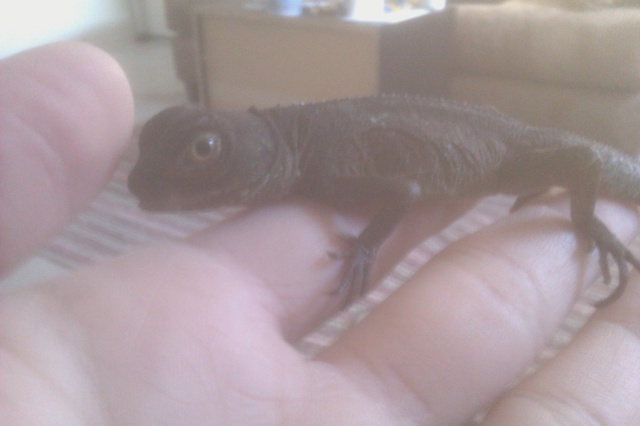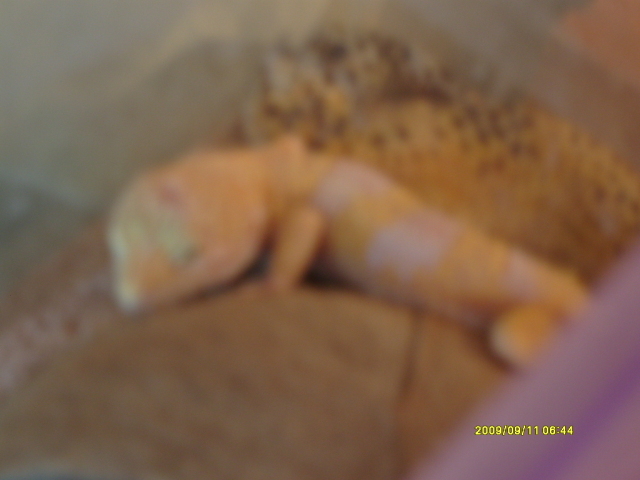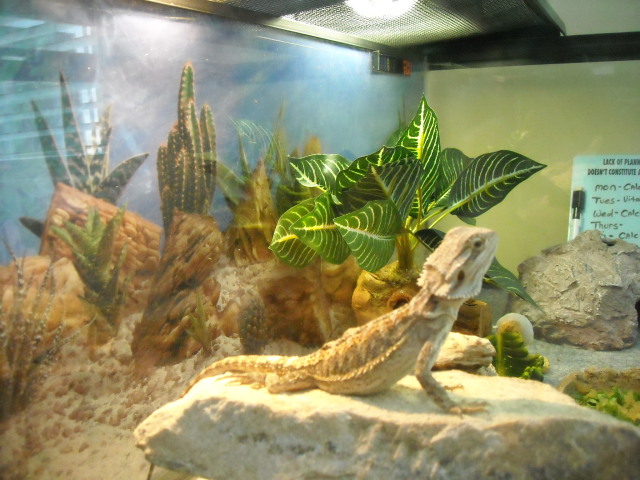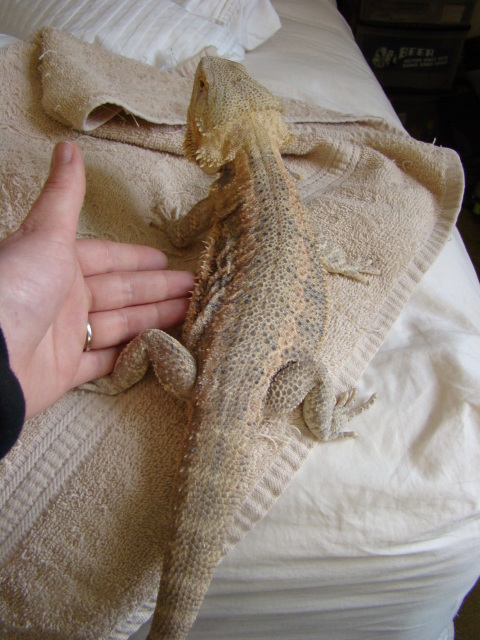QuestionCAN YOU SUPPLY ME INFORMATION ON BURMESE PYTHONS FROM BABYS TO ADULTS , ICLUDING ALL THEIR HUSBANDARY REQURIMENTS AND ANY HEALTH PROBLEMS RELATED TO JUST THE BURMESE ,ANY THING WILL GREATLY BE RECIEVED
AnswerHi Matthew,
Burmese python:
The Burmese python (Python molurus bivittatus) is native throughout Southeast
Asia including Burma, Thailand, Vietnam, southern China, and Indonesia. While
Burmese are being captive bred in the U.S. and Europe, native populations are
considered to be "threatened" and are listed on Appendix II of CITES (Convention
on International Trade of Endangered Species). All the giant pythons (including
the Indian, African Rock and Reticulated pythons) have historically been
slaughtered to supply the international fashion industry with exotic skins. The
exportation of young snakes for the pet trade and for their blood and gall as
used in folk medicine has put additional pressures on the wild populations that
cannot be sustained. If you must buy a Burmese, buy a captive-born animal.
These diurnal rainforest dwellers range from areas of lush vegetation lining the
river banks up to the montane forests. Equally at home on the ground and in
trees, they are also excellent swimmers, and always enjoy a nice, long soak in
warm water, especially just before they are ready to shed.
Like all diurnal snakes, Burmese spend the morning hours soaking up the sun's
warmth to enable them to begin moving around to look for food. In the wild,
snakes do not eat every day, and are not always successful in capturing every
prey animal at which they strike. (Captive snake owners generally do not
understand this and so it is all too common to see obese snakes in captivity.)
If they are lucky enough to eat, they spend the rest of the afternoon, and the
next several days or weeks, keeping warm enough to digest their meal.
Burmese breed in the early spring. Females lay their eggs in March or April;
their clutches range from 12-36 eggs. Females encircle their eggs, remaining
with then from the time they are laid until they hatch; during this time, they
will not leave the eggs and will not eat. While incubating, the females muscles
twitch; these tremors apparently enable the female to raise the ambient
temperature around the eggs several degrees. Once the hatchlings cut their way
out of their eggs, they are on their own.
Burmese pythons, like all pythons and boas, devour a variety of prey in the wild
- amphibians, lizards, other snakes, birds and mammals. In captivity, they
should be fed pre-killed mice, rats, and rabbits. You can buy the prey at pet
stores and from private breeders and suppliers to the herp trade; these animals
have been specially raised and are clean, healthy and well-nourished, and you
can always find a source who uses humane methods of euthanasia.
Under no circumstances should you feed your snakes wild-caught prey items. Wild
rodents and other animals carry a variety of parasites and bacteria for which
your snakes have no immunity. If you cannot afford to buy the proper food, you
should not buy the snake.
Selecting Your Burmese Python
Choose an animal that has clear firm skin, a rounded body shape, clean vent,
clear eyes and that actively flicks its tongue around when handled. When held,
the snake should grip you gently but firmly when moving around. It should be
alert to its surroundings. All young snakes are food for other, larger snakes,
birds, lizards and mammalian predators so your hatchling may be a bit nervous at
first but should settle down quickly. Like all pythons and boas, Burmese have
anal spurs. These single claws appearing on either side of the vent are the
vestigial remains of the hind legs snakes lost during their evolution from
lizard to snake millions of years ago. Males have longer spurs than do the
females, and have tails that are wider at the base (tail-end of the vent);
otherwise, there is little difference in temperament between the two sexes.
Inclusion Body Disease / Quarantine
Inclusion body disease (IBD) is a virus that affects boas and pythons (boids).
It is always fatal in pythons. Unfortunately, the lust to sell has overcome
common sense in private breeders as well as pet stores and wholesalers, and an
increasing number of boas and pythons are being sold who are infected with this
virus.
ALWAYS spend a considerable amount of time observing boids before you buy them,
especially at pet stores. Even reptile specialty stores have been selling
infected stock so buying from such stores is no guarantee that you are buying an
uninfected/unexposed snake. Don't buy a boid because you feel sorry for it,
because it looks sick and the store isn't providing proper care for it - you may
lose every boid you own.
ALWAYS observe strict quarantine procedures when bringing in a new boid into
your house if you already have other boids. IBD may take several months to
manifest itself. Owners have reported their new snakes showing signs as little
as one month after acquiring hatchlings to well over one year after acquiring a
new boid.
ALWAYS have boids who are not acting well (loss of appetite, regurgitating
meals, mouthrot, respiratory infection, contorted body positions, stargazing)
seen by a reptile vet as soon as possibly after symptoms are noticed. Warn the
vet before coming in that it may be IBD so they may take precautions to reduce
exposure to other boids who may be in their office at that time.
REMEMBER that it doesn't require snake-to-snake contact to spread the disease.
You may unwittingly spread it by handling other snakes without first thoroughly
washing your hands. Viruses are airborne - think twice about taking your snakes
to places where they will encounter snakes belonging to people who may not be
taking proper precautions.
Getting Started
Build or purchase a strong snake-proof enclosure. Select an enclosure especially
designed for housing snakes, such as the Critter Cottages(TM) with the
combination fixed screen/hinged glass top. All snakes are escape artists;
Burmese are especially powerful when it comes to breaking out. A good starter
tank for a hatchling is a 55 gallon tank. After the first couple of years (and
some bigger commercially available enclosures), you will have to build your own
enclosure out of wood and glass or Plexiglas. Some people partition off a large
part of a room or convert a walk-in closet into a suitable Burmese "tank". Be
prepared - giant snakes need lots of room, not the least of which is room enough
for you to get in there and clean it out! Remember that your snake will grow
rapidly, even when fed conservatively, so you must always buy or build an
enclosure much bigger than the present size of your Burmese.
Suitable substrate
Use paper towels, butcher paper or unprinted newsprint at first. These are
easily and quickly removed and replaced when soiled and will allow you to better
monitor for the presence of mites and the condition of the feces. Once the
animal is established, you can use decorative ground cover such as commercially
prepared shredded cypress or fir bark; do not use orchid bark. Pine, cedar and
redwood shavings should not be used as they can become lodged in the mouth while
eating, and due to the oils (most especially in any cedar product), may cause
respiratory infections and other problems. The shavings must be monitored
closely and all soiled and wet shavings pulled out immediately to prevent
bacteria and fungus growths. The utilitarian approach is to use inexpensive
Astroturf(TM) and linoleum. Extra pieces of Astroturf(TM) can be kept in reserve
and used when the soiled piece is removed for cleaning and drying (soak in one
part bleach to 30 parts water; rinse thoroughly, and dry completely before
reuse). Remember: the easier it is to clean, the faster you'll do it! Linoleum
is easy to clean and disinfect and, when used on the floor and a couple of
inches up the walls of wooden enclosures, will help preserve the wood from the
acidic urates.
Hiding Place
A hiding place should be provided for Burmese pythons. A half-log (available at
pet stores), an empty cardboard box or upside-down opaque plastic container, the
latter two with an access doorway cut into one end, can also be used. The
plastic is easily cleaned when necessary; the box can be tossed out when soiled
and replaced with a new one. Once your snake outgrows these easily replaced hide
boxes, you will need to use your imagination. Eventually, you can use a large
kitty-litter pan or suitably modified garbage can. Once the snake reaches ten
feet, you will have to put your imagination (or hammer and nails and wood) to
work to devise increasingly larger enclosures.
Temperature Gradient
Proper temperature range is essential to keeping your snake healthy. The ambient
air temperature throughout the enclosure must be maintained between 85-88F
during the day, with a basking area kept at 90F. At night, the ambient air
temperature may be allowed to drop down no lower than 78-80F. Special reptile
heating pads that are manufactured to maintain a temperature about 20F higher
than the air temperature may be used inside the enclosure. There are adhesive
pads that can be stuck to the underside of a glass enclosure (unfortunately,
when the time comes to move your snake to a larger tank, the heating pad cannot
easily be removed from the old tank and reused). Heating pads made for people,
found at all drug stores and supermarkets, are also available; these have
built-in high-medium-low switches and can be used under or inside a glass or
wood enclosure. You can also use incandescent light bulbs in porcelain and metal
reflector hoods to provide the additional heat required for the basking area.
All lights must be screened off to prevent the snake from burning itself, and
bright lights must be turned off at least 12-14 hours a day to mimic a proper
photoperiod; if kept under lights all the time, the snakes will stress and may
become ill. If the proper temperatures cannot be maintained without the
incandescent light, then you must use another source of non-light emitting or
dim light emitting heat. All pythons are very susceptible to thermal burns and
for this reason a hot rock must not be used. Buy at least two thermometers: one
to use 1" above the enclosure floor in the cooler side, and the other 1" above
the floor in the basking area. Don't try to guess the temperature. You will end
up with a snake that will be too cold to eat and digest its food. Once your snake
is bigger, invest in a pig blanket, a large rigid pad for which you can buy a
thermostat to better controls the temperature.
Special Lighting
No special lighting is needed. You may use any incandescent bulb in the
enclosure during the day, and a suitable red, blue or nocturnal reptile light at
night. Snakes do not require ultraviolet B wavelengths. Make sure the snake
cannot get into direct contact with the light bulbs. If they climb into the
fluorescent tube fixture, they may pop out and break the bulb--an expensive and
potentially lethal accident.
Feeding
Allow your snake to acclimate for a week or two to its new home. Start your
hatchling (about 22" in length) off with a single pre-killed week to 10-day old
"fuzzy" rat. A smaller sized hatchling may require a small mouse. Older Burmese
may be fed larger pre-killed rats. The rule of thumb is that you can feed prey
items that are no wider than the widest part of the snake's body. While Burmese
(most of whom are bottomless pits when it comes to putting down food) will often
gladly eat prey that is too large for their size, they will generally
regurgitate the prey item one or more days later--not a pretty sight. If you
have not had any experience force feeding a snake, you may not want to try it
yourself until you have seen someone do it. It is very easy to overfeed Burmese
as most of them are always eager for food, whether they need it or not. Be
judicious--you will end up with a giant snake soon enough. Just feed enough to
keep it healthy, not obese.
Water
Provide a bowl of fresh water at all times; your snake will both drink, soak and
may defecate in it. Check it and replace with fresh water as necessary. Bowls
should be big enough for the snake to get into and soak before its sheds. As the
snake gets too big for suitably sized tubs in its enclosure, it will have to be
taken out and bathed in a secured and safe bathroom.
Veterinary Care
Routine veterinary screening for newly acquired snakes is essential. Many of the
parasites infesting Burmese and other reptiles can be transmitted to humans and
other reptiles. Left untreated, such infestations can ultimately kill your
snake. When your snake first defecates, collect the feces in a clean plastic
bag, seal it, and label it with the date, your name and phone number and the snake's
name, and take it and your snake to a vet who is experienced with reptiles.
There it will be tested for parasites (which the majority of pet trade reptiles
have) and the proper medication given.
Handling your new snake
After giving your Burmese a couple of days to settle in, begin picking it up and
handling it gently. It may try to move away from you and may threaten you by
twitching its tail and hissing. Be gentle but persistent. Daily contact will
begin to establish a level of trust and confidence between you and your snake.
When it is comfortable with you, you can begin taking it around the house. Don't
get over-confident! Given a chance and close proximity to seat cushions, your
Burm will make a run (well, a slither) for it, easing down between the cushions
and from there, to points possibly unknown. Always be gentle and try to avoid
sudden movements. If the snake wraps around your arm or neck, you can unwind it
by gently unwrapping it starting at the tail end, not the head.
Necessities
Some things you should have on hand for general maintenance and first aid
include: Nolvasan(R) (chlorhexidine diacetate) for cleaning enclosures and
disinfecting food and water bowls, litter boxes, tubs and sinks etc. Betadine(R)
(povodine/iodine) for cleansing scratches and wounds. Set aside feeding and
water bowls, and a soaking bowl or tub for the sole use of your snake.
Bad Press - And Often Deservedly So
Giant pythons have been in the press quite a bit lately, all due to the fact
that their owners died as a result of improper handling of their snakes. While
admittedly the press sensationalizes in order to better sell papers, the fact of
the matter is that not only is there still a great deal of morbid fear on the
part of the general public as regards snakes in general, and giant pythons in
particular, but there is also a great deal of stupidity being displayed by many
giant python owners (such as by those owners who are surprised to find that
their ten foot snake left their backyard to go exploring the neighborhood when
left outside for a bit of sun). And for every story that the press "neglects" to
correct, such as the man who actually suffered a fatal heart attack while
watching TV with his python, rather than being killed by it, the press also
fails to point out what was being done improperly by the snake owner at the time
of the "attack." If you smell like food to a snake, especially some of the giant
pythons who seemingly contain a bottomless pit instead of a finite stomach, you
will be grabbed. And since most people's reaction when being grabbed by a mouth
full of fangs in a head the size of a cantaloupe is to flinch and draw away, the
snake, sensing live "prey," does what a snake ought to do--bite harder to retain
a good grip on the "prey" (hopefully your arm and NOT your face) and coil and
constrict around it to begin the process of suffocation. In the case of the
unfortunate Canadian snake owner who was killed, his python was not very big,
but a) the owner was highly intoxicated at the time, b) the snake was in shed
and its eyes were fully opaque and c) the snake was known to be temperamental in
general. So not only was the snake feeling particularly cranky and intolerable
of human interaction, its human was too intoxicated to act, and react,
appropriately.
According to one hospital emergency room physician who has made a study of snake bites,
he found that the majority of bites happen to young adult males (late
teens through mid-twenties) who are intoxicated at the time of the "attack." On
the flip side, though, is the unfortunate Colorado family whose young teenage
son was napping when he was attacked and killed by the family's eight foot pet
Burmese, a snake who had been free-roaming in the house ever since it was
brought home as a hatchling.
While it is true that you are more likely to die in an automobile accident, it
is also true that in the past year alone, the number of deaths attributed to and
actually caused by pet pythons has more than tripled. As a direct result of the
irresponsible actions of these python owners, cities and states are enacting
ordinances and legislation banning or severely restricting the private ownership
of large pythons - in many cases any snake of any species which reaches 6 or
more feet in length.
BEFORE YOU BUY...
Go to a zoo that has an adult specimen. Check out your local herpetological
societies to find other giant python owners and ask if you can be allowed to
visit their snake, and, if possible, handle it. Few pet stores actually have
full-grown adult specimens.
Check out your city, county and state laws to see if there are any restrictions
on owning a giant python or boa. Cities who have experienced terror because
someone let their Burmese get out of the house have been passing increasingly
stringent regulations prohibiting, or severely governing, the ownership or
possession of large snakes.
If you have small children, or children will have access to the room in which
the snake will be kept, ask yourself whether you can properly secure the snake
so that, not only is there no chance for it to escape, but there is no way for
young fingers to undo the cage.
Remember that regardless of how tame your Burmese becomes, and no matter how long
you have had it, it is still a wild animal and as such is to be considered
unpredictable and potentially dangerous. (A tame 8', 56 lb one, free roaming
since the family bought it as a hatchling, killed the family's 14 yr old, 5'
tall, 99 lb son who was apparently napping at the time of the attack...the
autopsy evidence showed that the boy tried to get the snake's mouth and body off
of him - his hands were perforated with teeth marks, his torso bearing bruise
marks from the constriction.. In this particular case, here was no apparent reason. Hope this helps. Edmund Brown [ReptileEd] http://www.ReptileSpectacular.com
.

 Cloudy eye???
Question
Cloudy eye
my male gecko is having som
Cloudy eye???
Question
Cloudy eye
my male gecko is having som
 Should I be concerned about my CWD
QuestionQUESTION: Ive had this guy for probably a week
Should I be concerned about my CWD
QuestionQUESTION: Ive had this guy for probably a week
 Just Got her...
Question
Tia Dalma
Hi Diane,
I have two Leopard Geckos
Just Got her...
Question
Tia Dalma
Hi Diane,
I have two Leopard Geckos
 Baby Beardie Housing
QuestionQUESTION: First I would like to say your site h
Baby Beardie Housing
QuestionQUESTION: First I would like to say your site h
 scared, lethargic and not eating beardie- Came on suddenly
QuestionQUESTION: Ive had Brutus- a bearded dragon for
scared, lethargic and not eating beardie- Came on suddenly
QuestionQUESTION: Ive had Brutus- a bearded dragon for